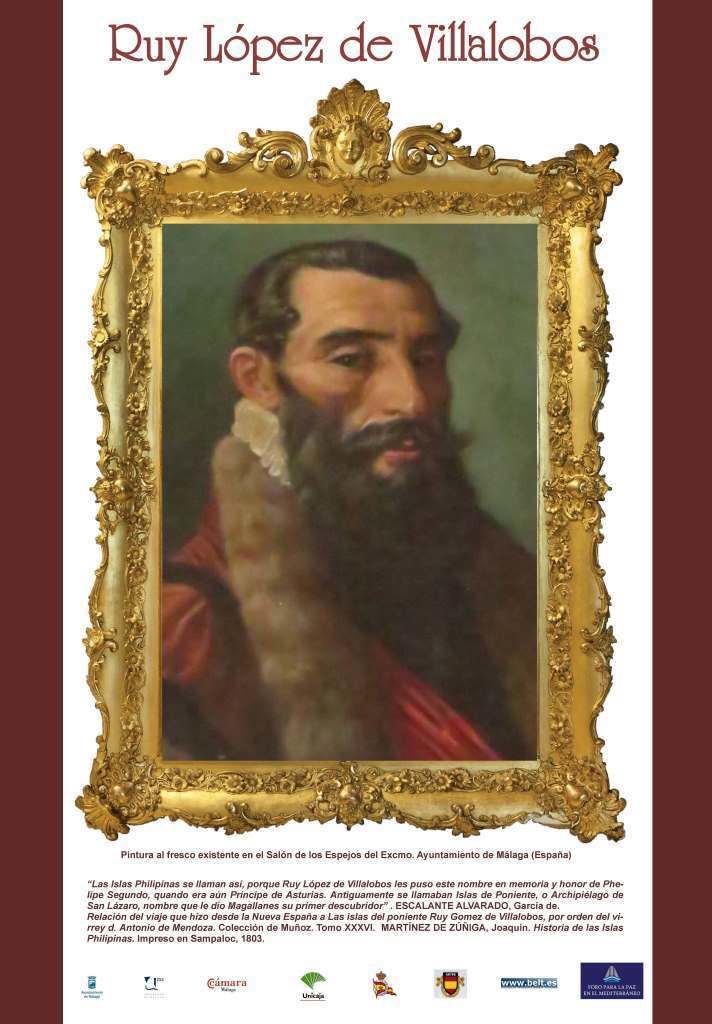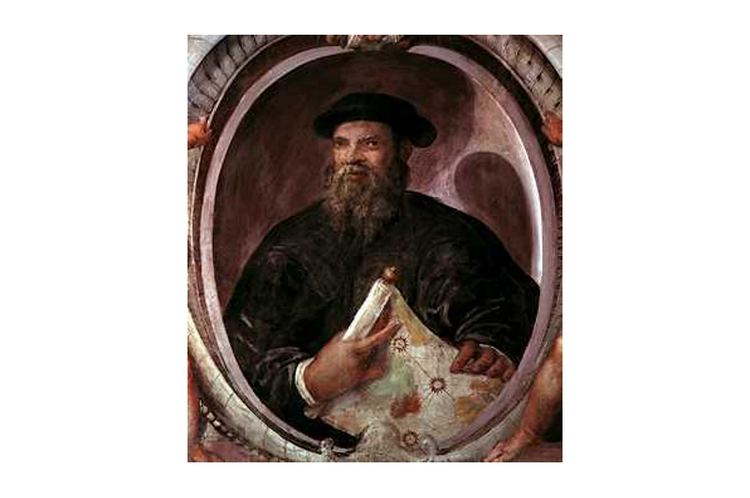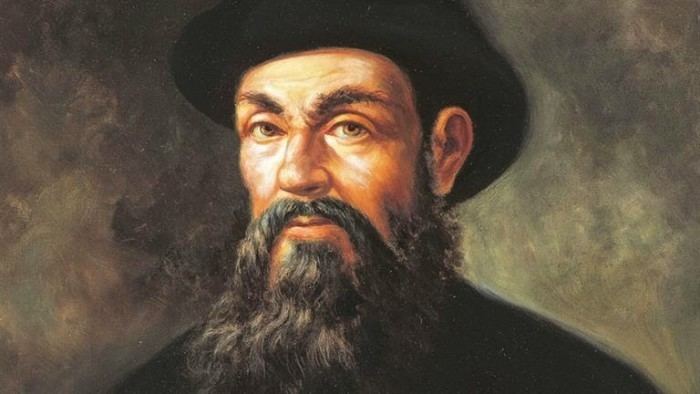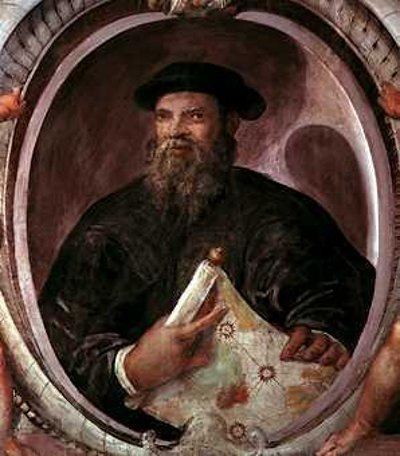Name Ruy de | ||
 | ||
Born ca. 1500 (age 43–44) Malaga, Spain Died April 4, 1544 (aged 43–44)Ambon, Moluccas Islands, Indonesia Known for He gave the name Las Islas Filipinas to the Philippines to honor Philip II of Spain | ||
What is Ruy López de Villalobos?, Explain Ruy López de Villalobos, Define Ruy López de Villalobos
Ruy López de Villalobos (ca. 1500 – April 4, 1544) was a Spanish explorer who sailed the Pacific from Mexico to establish a permanent foothold for Spain in the East Indies, which was near the Line of Demarcation between Spain and Portugal according to the Treaty of Zaragoza in 1529. Villalobos gave the Philippines their name, after calling them Las Islas Filipinas in honor of Philip of Austria, the Prince of Asturias at the time, who later became Philip II of Spain. In 1542 he also discovered a Pacific group of islands, most likely Hawaii, but the Spaniard kept the discovery secret.
Contents
- What is Ruy Lpez de Villalobos Explain Ruy Lpez de Villalobos Define Ruy Lpez de Villalobos
- Expedition to the Philippine Islands
- Publications
- References

Expedition to the Philippine Islands

López de Villalobos was commissioned in 1541 by the Viceroy of New Spain, Antonio de Mendoza, who was the first colonial administrator in the New World, to send an expedition to the Islas del Poniente, meaning Islands of the West, now known as the Philippines. His fleet of six galleon ships, the Santiago, San Jorge, San Antonio, San Cristóbal, San Martín, and San Juan, left Barra de Navidad, Jalisco, Mexico with 370 to 400 men on November 1, 1542. The fleet first encountered the Revilla Gigedo Islands off the west coast of Mexico, among which the sighting of Roca Partida was reported for the first time. On 26 December 1542 they sighted a group of islands in the Marshalls that they called Corales (Corals in Spanish), which most probably are those of the Wotje Atoll. They thought these to be the Los Reyes islands previously charted by Álvaro de Saavedra in his 1528 expedition. They anchored at one of the islets that they named San Esteban (St. Stephen). They left on 6 January 1543 and that same day they sighted several small islands on the same latitude as the Corales, which they named Los Jardines (The Gardens), which were those of Kwajalein. On 23 January 1543 the expedition found Fais in the Carolines that they charted as Matelotes. On 26 January 1543 they charted some new islands as Los Arrecifes (The Reefs) which have been identified as the Yaps also in the Carolines.

According to Oskar Spate with Villalobos there was the pilot Juan Gaetan, credited for the discovery of Hawaii by La Perouse. Gaetan's voyage is described in similar terms, with the same sequence of islands in 1753, with no identification to any others known at the time, which is an a posteriori conjecture. In 1825, Casado Giraldes, a Portuguese geographer states that the Sandwich Islands were discovered by Gaetan in 1542, and does not even mention James Cook.

Between January 6 to 23, 1543, the galleon San Cristóbal piloted by Gines de Mafra, who was a member of the crew of the Magellan expedition in 1519-1522, was separated from the fleet during a severe storm. This ship eventually reached the island of Mazaua, a place were Magellan anchored in 1521. This was the second visit of de Mafra to the Philippines, which is identified today as Limasawa in the southern island of Leyte. The story of Limasawa was written in 1667 by a Jesuit priest, Friar Francisco Combés. His documents on "Limasawa" has been translated by historians.

On February 29, 1543, they entered Baganga Bay, which they named Malaga on the eastern coast of Mindanao. López de Villalobos named Mindanao "Caesarea Karoli" after the Holy Roman Emperor, Charles V of Spain. The fleet stayed there for 32 days; the entire crew suffered extreme hunger. He ordered his men to plant corn but it failed. On March 31, 1543, the fleet left in search of Mazaua for food. Because of low-winds they could not sail on. After several days of struggle, they reached Sarangani.
The galleon San Cristóbal, which had been driven ashore on Limasawa Island 2 months before, appeared unexpectedly with a load of rice and other foodstuffs for the commander. On August 4, 1543, the San Juan, and San Cristóbal were sent back to Leyte and Samar for more food, with the San Juan to stock up for the Pacific crossing and to proceed to Mexico. A Portuguese contingent arrived on August 7, and delivered a letter from Jorge de Castro, governor of the Moluccas, demanding an explanation for the presence of the fleet in Portuguese territory. López de Villalobos responded, in a letter dated August 9, that they were not trespassing, and were within the Demarcation Line of the Crown of Castile.
The San Juan left for Mexico on August 27, 1543, with Bernardo de la Torre as captain. Another letter from Castro arrived in the first week of September with the same protest, and López de Villalobos wrote a reply dated September 12, 1543, with the same message as his first. He departed to Abuyog, Leyte with his remaining ships, the San Juan, and the San Cristóbal. The fleet could not make headway because of unfavorable winds. In April 1544, he sailed for Island of Amboyna. He, and his crew members then made their way to the islands of Samar, and Leyte, which he named Las Islas Filipinas (The Philippine Islands) in honour of the Prince of Spain, Philip II. Driven away by hostile natives, hunger, and a shipwreck, López de Villalobos was forced to abandon his settlements in the islands, and the expedition. He, and his crew members sought refuge in the Moluccas, where they quarrelled with the Portuguese, who imprisoned them.
López de Villalobos died on April 4, 1544, in his prison cell on the island of Amboyna, of a tropical fever, or as the Portuguese said "of a broken heart". Some 117 remaining crew members survived, among them were de Mafra, and Guido de Lavezaris. De Mafra produced one manuscript on the Magellan-Elcano circumnavigation, and had this delivered to Spain by a friend on board. They sailed for Malacca, where the Portuguese put them on a ship bound for Lisbon. Thirty elected to remain, including de Mafra. His manuscript remained unrecognized for many centuries. It was discovered in the 20th century, and published in 1920.
An account of the voyage based on the recollections of a surviving Italian sailor, Juan Gaetano, was published in 1550-1559 by Giovanni Battista Ramusio, an Italian historian, in his Navigationi et Viaggi ("Navigations and Travels"); a collection of explorers' first-hand accounts of their travels which also included accounts of Marco Polo, Magellan, Alvar Nuñez Cabeza de Vaca and others.
